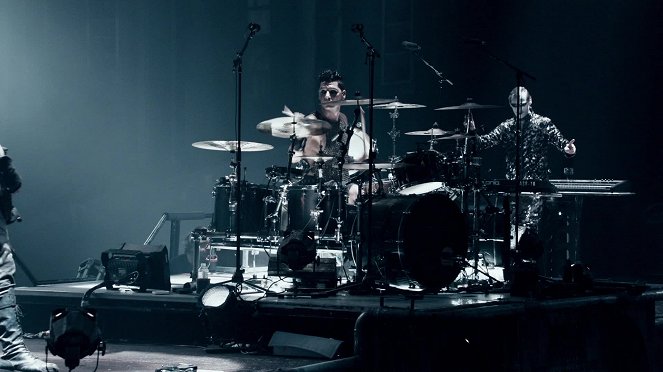Regie:
Jonas ÅkerlundKamera:
Eric BromsBesetzung:
Till Lindemann, Richard Kruspe, Paul Landers, Flake Lorenz, Oliver Riedel, Christoph SchneiderStreaming (2)
Inhalte(1)
Die "Made in Germany 1995–2011"-Tour, auf die die Band Rammstein im November 2011 ging, war ein monumentales Unternehmen. 78 Konzerte in Europa, 21 in Nordamerika. Wer über eine solche Tournee einen Film dreht, muss groß denken. "Rammstein: Paris" kam erst gut fünf Jahre nach den Paris-Konzerten in die Kinos. Die "Made in Germany 1995–2011"-Tour, auf die Rammstein im November 2011 ging, war ein monumentales Unternehmen: Die Band absolvierte 78 Konzerte in Europa und 21 in Nordamerika. Im Gepäck hatte sie eine Bühnenkonstruktion aus Stahl, 24 Meter breit, 15 Meter hoch, 100 Lautsprecherboxen, eine Soundanlage mit 380.000 Watt Leistung, insgesamt 25 Trucks und 125 Crewmitglieder. Der Musikfilm "Rammstein: Paris" kam erst gut fünf Jahre nach den Paris-Konzerten, bei denen er im März 2012 gedreht wurde, im März 2017 in die Kinos. Regisseur Jonas Åkerlund betrieb den größtmöglichen Aufwand, um diese Show angemessen porträtieren zu können. Der Film, der daraus entstanden ist, ist mit 16 Songs aus dem gesamten Repertoire nicht nur das bislang spektakulärste Bilddokument über die derzeit erfolgreichste deutsche Rock-Band, sondern er ist auch ein Meisterwerk des Musikkinos! Åkerlund ist berüchtigt für die radikalen, stilbildenden Videos. Durch seine Musikinszenierungen flackern irrwitzige Details, umgestülpte Perspektiven, Kontrast-Schocks, Sinnesverwirrungen. In "Rammstein: Paris" zelebriert er das von der ersten Minute an. 16 Songs in knapp 100 Minuten spielen Rammstein im Film, die Skala reicht von "Wollt ihr das Bett in Flammen sehen?", dem ersten Song der allerersten Platte, bis zu "Frühling in Paris" vom letzten Studioalbum "Liebe ist für alle da". (arte)
(mehr)Kritiken (1)
Therapy Germany. Slavoj Žižek says that one of the main reasons for Rammstein's mass popularity is their übermensch stylization, strong gestures, firm step, combined with their constant undermining of these very elements. They allow us to fall back after a long time into a form of expression, which at any time before had quite problematic connotations in connection with the rise and stylization of Nazism, yet the passion to succumb to it is somehow a subconscious part of every human being. Rammstein have given people the opportunity to indulge in it again, but without those problematic connotations, although the band has never resisted any controversy; on the contrary, they have benefited from it throughout their existence. Thus, Rammstein concerts are perhaps the only ones nowadays that can exploit the monumental potential of the ten-thousand-capacity stadium arenas in which they perform, because the mass of fans is part of the whole concept. Concert footage thus mostly sensibly avoids shots of individual attendees, but captures them as a noisy amorphous mass, obediently repeating the gestures the band wants them to make. It works equally well with the arena space, which for a very long time defies any notion of its size, height, orientation, or whether the hall is closed or open. What emerges is a wondrous illusion of the Rammstein world, full of fire, blood, movement and dystopia, from which nothing is able to lead. Rammstein is not just a band – it is an entire artistic audiovisual concept that cannot be replaced and can never be fully seen. This combination of nazi-queer-trance-technophile-autocratic-macho-sado-mass-burlesque charade would be a shame to miss.
()

